In the realm of light family card games, there is one undisputed monarch…Uno. Often imitated, but never quite duplicated, Uno’s success is comprised of a number of aspects: simple gameplay, colorful artwork and graphic design, and great timing. When Merle Robbins created Uno in 1971 there were very few card games which required a custom deck; most people just played games which utilized poker or pinochle cards. Uno was different with its iconic Wild cards, Draw Twos, Draw Fours, Skips and Reverses. It revitalized the card game industry and gave people a simple, cheap, and portable game that they could take anywhere, and play over coffee, pie, or beers.
Every year or two a new game will come along and attempt to dethrone Uno, but through a combination of familiarity, comfort, and ennui, Uno prevails. But enough about Uno, I’m here to talk to you about the newest contender for the throne: PUSH from Ravensburger Games.
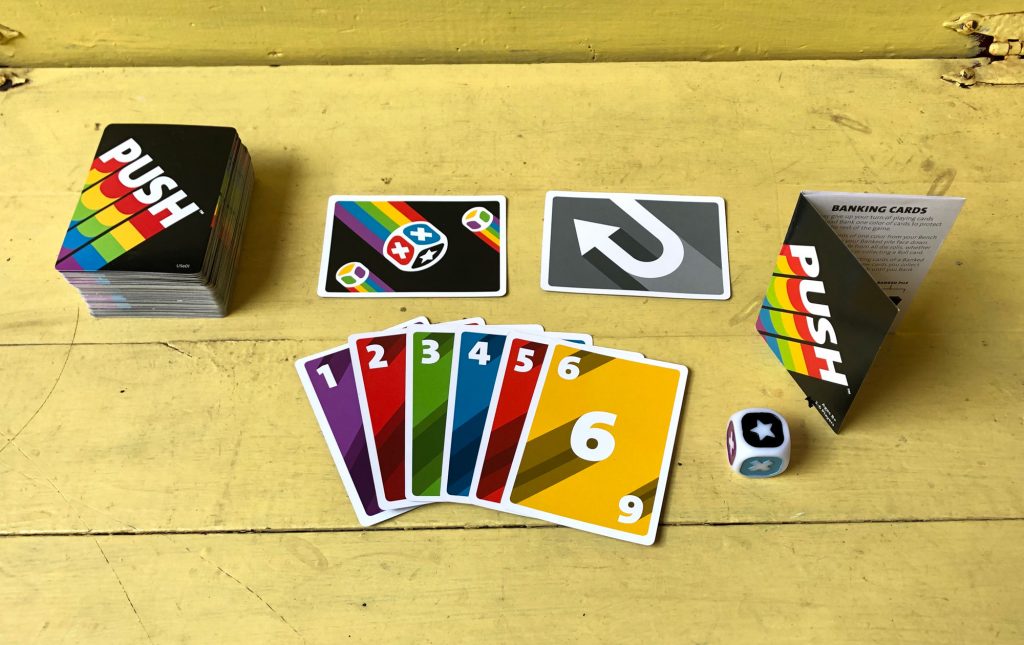
Press Your Luck
PUSH is a press your luck, or push your luck, style game in which players draw cards off a shared deck, attempting to increase the number of points they earn, while daring the deck to throw them a curveball. If players take it too far they’ll lose everything they might have gained that turn, while directly benefiting their opponents. The player with the most points at the end of the game will win.
Let’s dig into a sample round in PUSH so that you can see how it plays.
Teaching PUSH in 1 Minute
One of my favorite things about PUSH is how easy it is to teach. In fact when I’m introducing new players to PUSH, I don’t even bother with a “pre game” rules explanation, I do everything in the first turn. Shuffle the deck, and place it in the middle of the table, select a start player, and you’re ready to go.
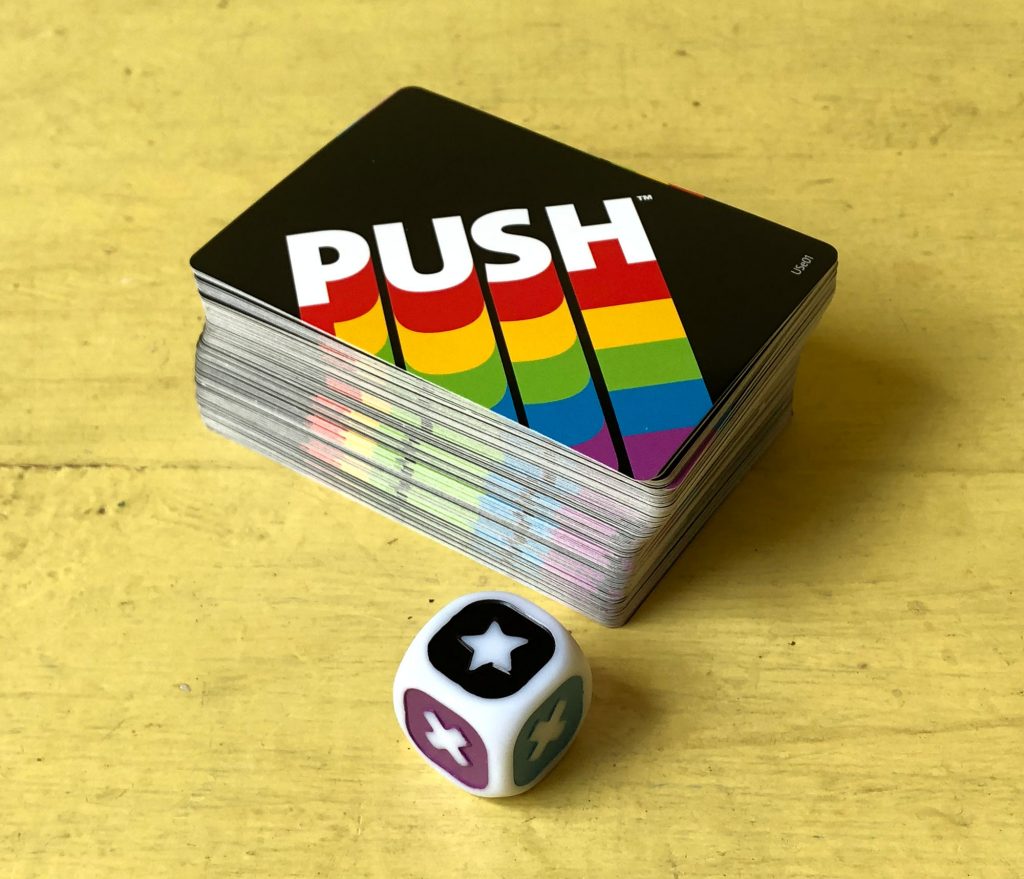
On your turn you can Draw, Stop or Bank. If you Draw you’ll flip over the top card of the deck, and place it into one of three stacks of cards. The only placement rule is that no stack can have more than one of each number, or one of each color. Continue to draw cards and place them into stacks until one of two things happen: you choose to stop, or you can’t legally place a card.
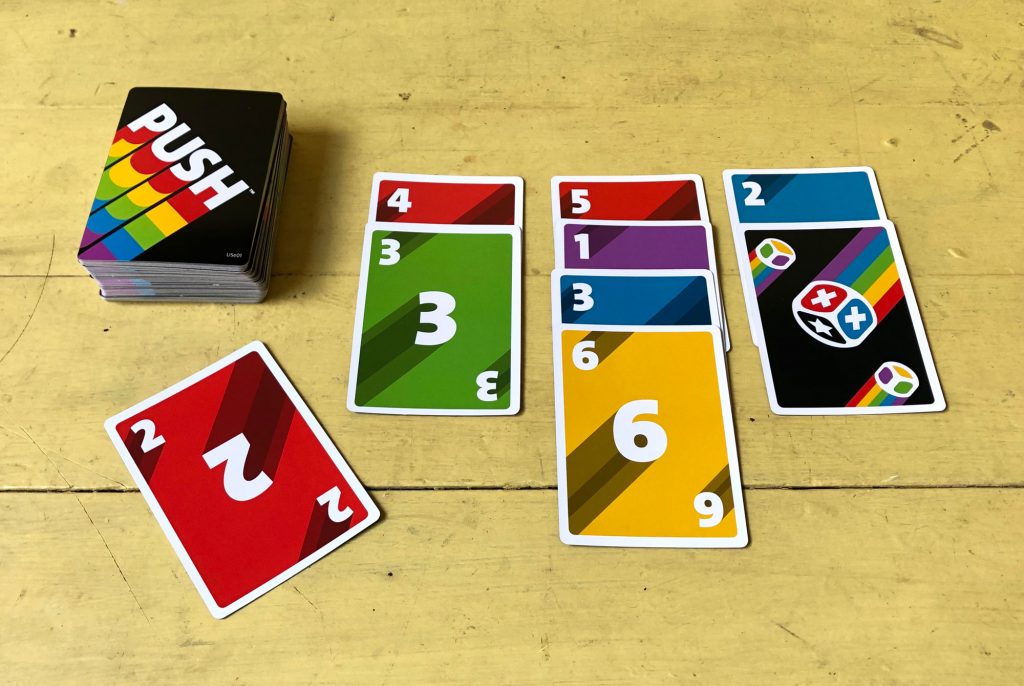
If you choose to stop then you select one of the stacks of cards and place them into your Bench, a special part of your personal play area that is vulnerable to loss (more on that in a moment). Then the next person in turn order gets to choose a stack, and so on. If you bust, then you don’t get to choose, and the selection process continues without you. Since there’s a maximum of three stacks, some players might not get a stack.
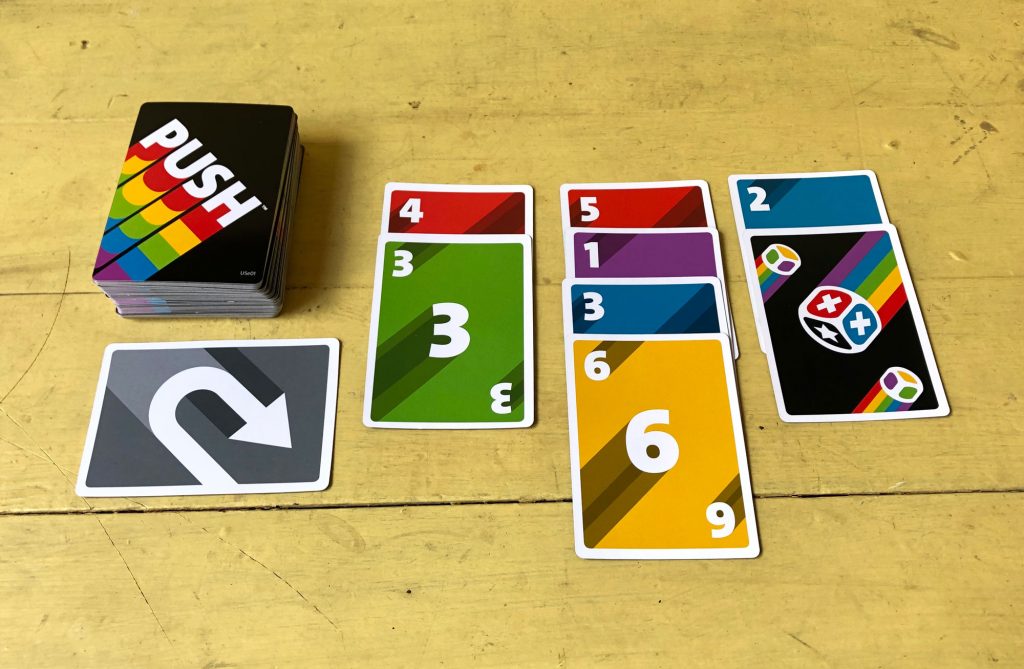
If one of the cards in your stack is a Roll card then you’ll have to roll the die and take your chances with lady luck. The colors on the die match the colors of the cards, and the player who rolled the die will be forced to discard all the cards of that color from their Bench.
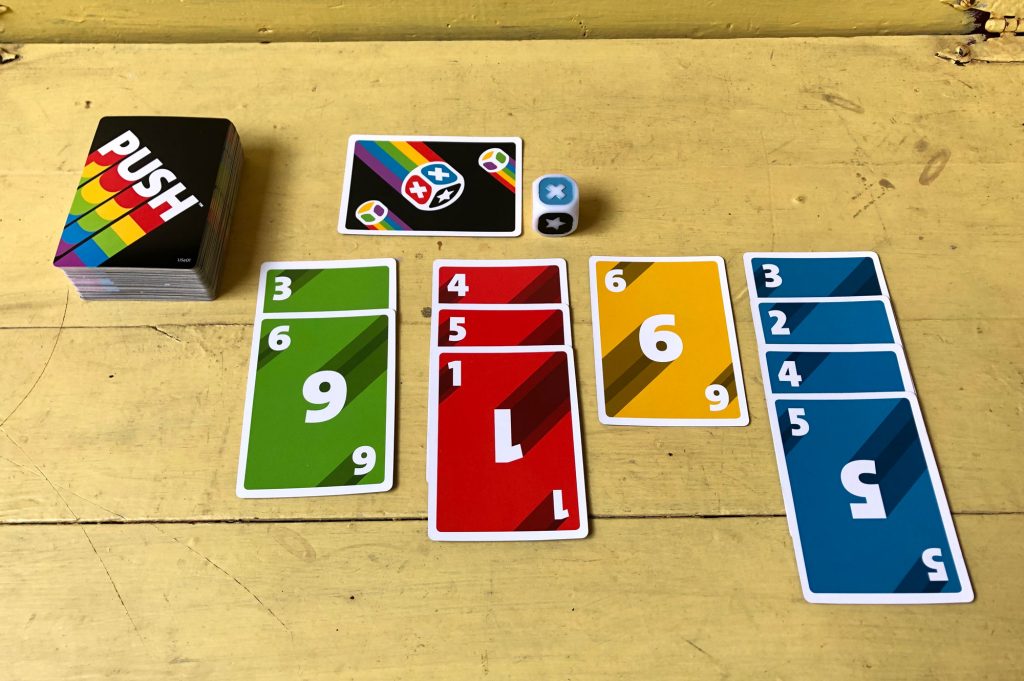
On your turn you may also choose the option of passing, and instead Bank cards, which means that you can select all of the cards of one color and move them from your Bench to your Bank, where they will be safe for the rest of the game.
The game is played until the deck runs out, at which time players tally up the face value of all cards in their Bank, and any cards remaining on their Bench, to determine the winner.
The Tactics of Simple Rulesets
Much like games such as No Thanks, Las Vegas, or Circle the Wagons, PUSH offers an unexpected amount of depth when compared to the shallowness of the rules…they’re printed on a multifold piece of paper the size of a business card after all.
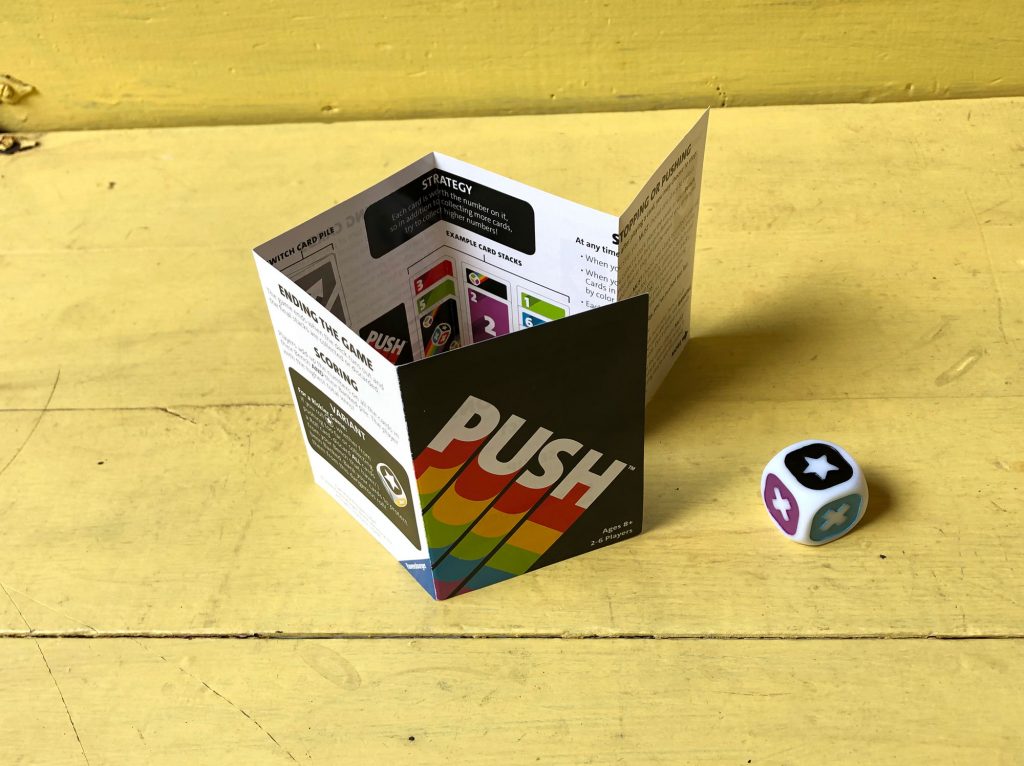
“I’m just flipping over cards and putting them into stacks,” you might say, and while mechanically that’s true, there are actual tactics in PUSH. If you get lucky and can fill up a single stack with point cards, should you continue drawing in hopes of forcing your opponent to take a Roll card? If every stack has a Roll card and you haven’t Banked in a few turns, you might even want to intentionally bust so that you don’t lose some of your hard won points.
Since there are 5 colors, and 6 numbers (plus that Roll card), you’ve got some wiggle room when drawing and placing. However, your decision tree on where to place a newly drawn card narrows with each subsequent draw. Deciding whether to turn over the top card of the stack is the hardest decision you’ll make in the game…until you’re considering whether to draw the next card.
That’s the beauty of games like PUSH. It has such a simple ruleset that is easy to teach to anyone, especially non-gamers. But because it offers a rich set of choices it can still appeal to people already immersed in the hobby.
Aesthetics Aren’t Everything
Every time I pull out my copy of PUSH someone invariably says “We’re playing Uno?” in a confused tone. PUSH has a similar graphic design style and color scheme but that’s really where the similarities end. There’s no denying that Ravensburger intentionally made those choices to invoke the spirit of Uno; and that’s okay. PUSH does have one primary flaw, it comes in a sturdy plastic case, which fits all the components like a glove, but just barely. The lid snaps on, but doesn’t feel like it’s attached well, which led me to wrap a rubber band around it to make sure it wouldn’t come open. This isn’t a deal breaker because it doesn’t affect the game itself, but it is pretty annoying.

Give PUSH a Try
PUSH is easily one of my favorite games from this year. I’m so thankful that I came across it on Twitter, and I try to teach it to everyone I can. There’s nothing wrong with Uno, but variety is the spice of life. Pick up a copy of PUSH and teach your friends, you’ll thank me later…and so will they.


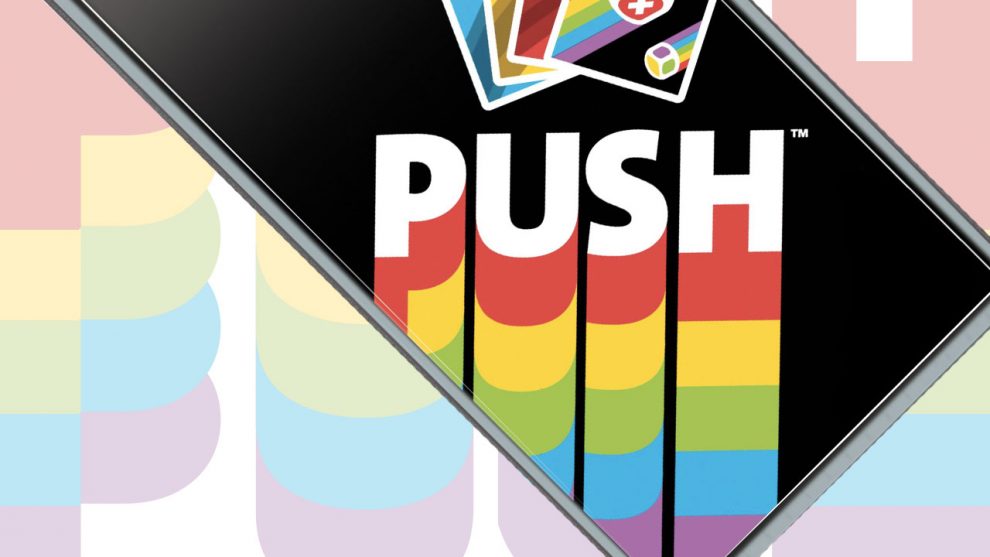

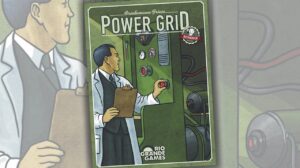







Add Comment